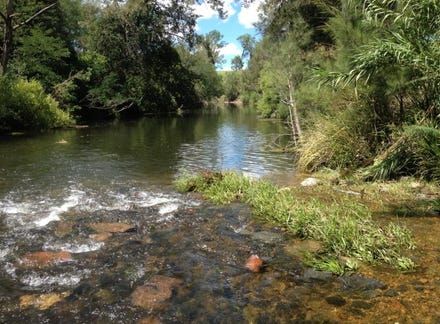Dam and River Fishing
Drop a line at the Paterson river only 7 min drive

Or venture up to Lostock Dam for some Freshwater fun

Dam and river fishing are popular outdoor activities that offer anglers the opportunity to catch a variety of fish species. Each environment presents its own challenges and rewards. Here are some tips for dam and river fishing:
Dam Fishing:
Research the Dam:
- Learn about the specific dam you plan to fish in. Understand its rules and regulations, including any permits required.
Fish Species:
- Identify the fish species present in the dam. Different dams may be home to various types of fish, including bass, catfish, trout, and more.
Check Regulations:
- Ensure you are aware of fishing regulations for the dam. This includes catch limits, size restrictions, and any special rules.
Use Appropriate Gear:
- Choose the right fishing gear for the type of fish you're targeting. This may include different types of rods, reels, lines, and bait.
Locate Fish Hotspots:
- Explore the dam to find areas where fish are likely to congregate. Look for structures like submerged rocks, fallen trees, or underwater vegetation.
Experiment with Bait:
- Fish in dams can respond to a variety of baits. Experiment with live bait, artificial lures, or even different types of flies depending on the species.
Understand Water Conditions:
- Be aware of water conditions such as temperature, depth, and clarity. These factors can influence fish behavior.
River Fishing:
Study River Flow:
- Understand the flow patterns of the river. Fish are often found in areas with varying currents, such as eddies, riffles, and pools.
Match the Hatch:
- Be aware of the insect hatches in the area. Use artificial flies or lures that mimic the insects present, as fish often feed on them.
Adjust to Water Levels:
- River levels can change based on weather conditions. Adjust your fishing strategy accordingly, as fish may move to different areas depending on water levels.
Use Natural Cover:
- Look for areas with natural cover, such as overhanging trees or submerged rocks. Fish often use these spots for protection and ambush prey.
Float Fishing:
- Consider float fishing, especially in slower-moving sections of the river. Use a float or bobber to suspend bait at various depths.
Safety First:
- Be cautious of river currents, especially in areas with strong flows. Always prioritize safety, wear appropriate gear, and be mindful of your surroundings.
Respect the Environment:
- Practice catch-and-release when necessary, and follow Leave No Trace principles to minimize your impact on the river ecosystem.
Remember to check local fishing regulations and obtain any necessary permits before fishing in dams or rivers. Additionally, being patient and observant can significantly enhance your fishing experience in these environments.
